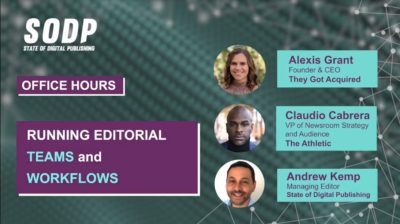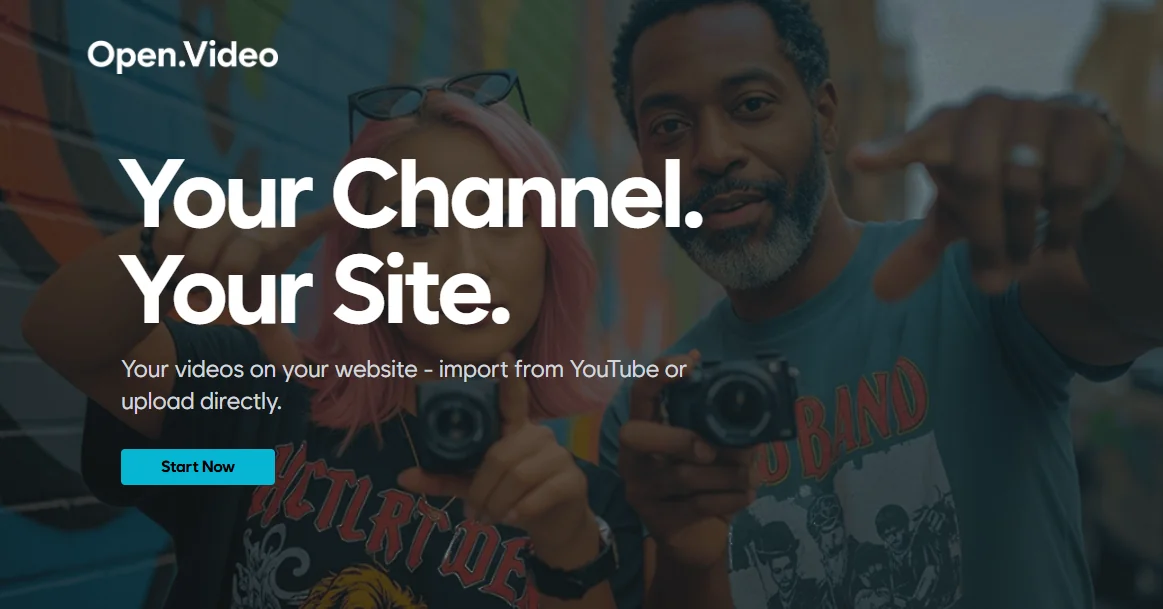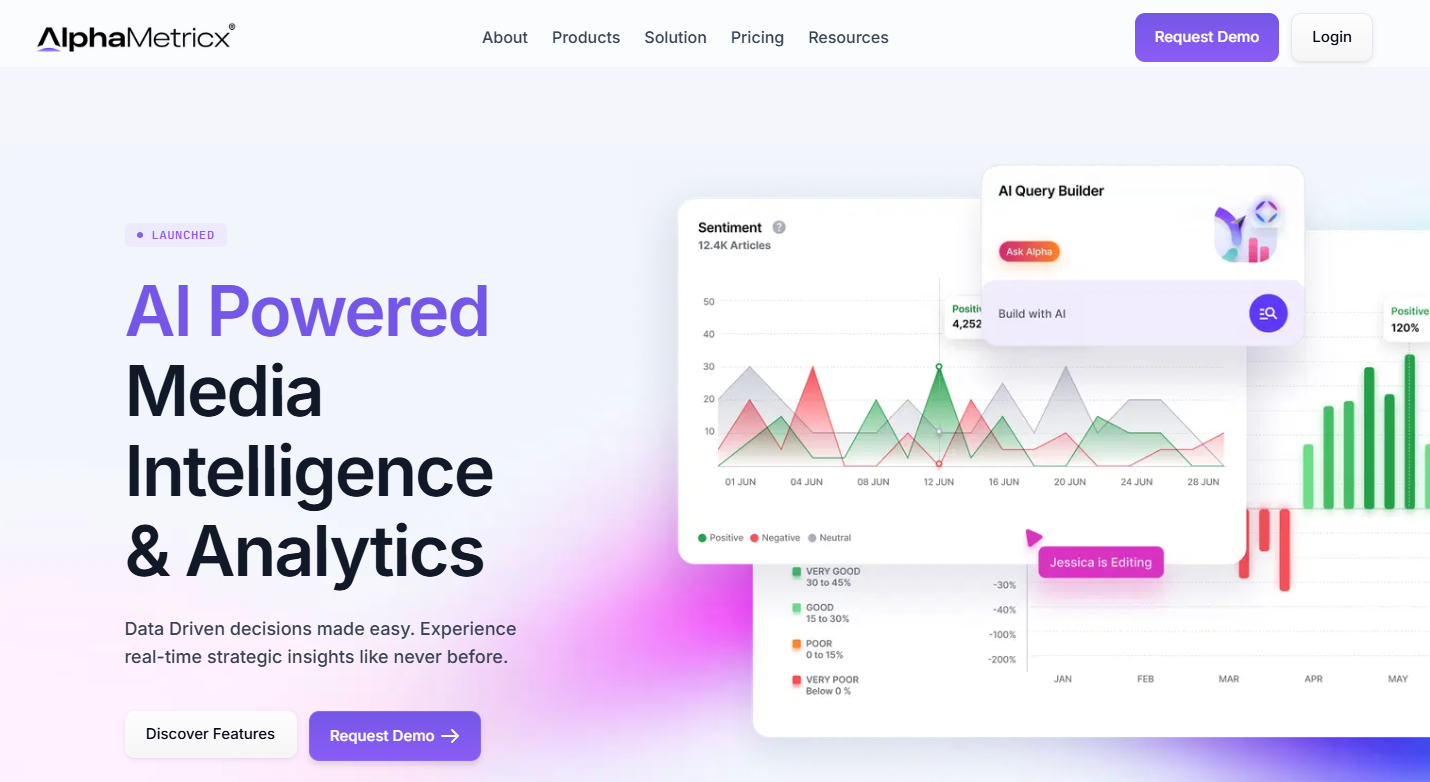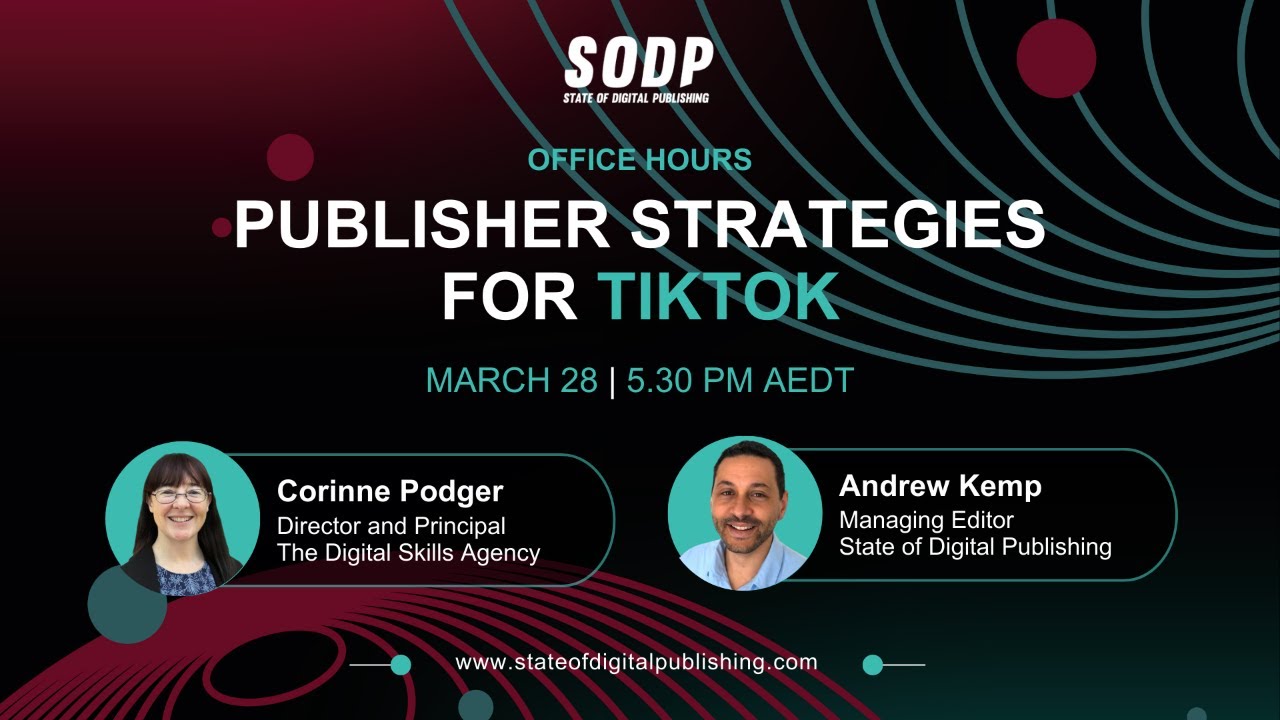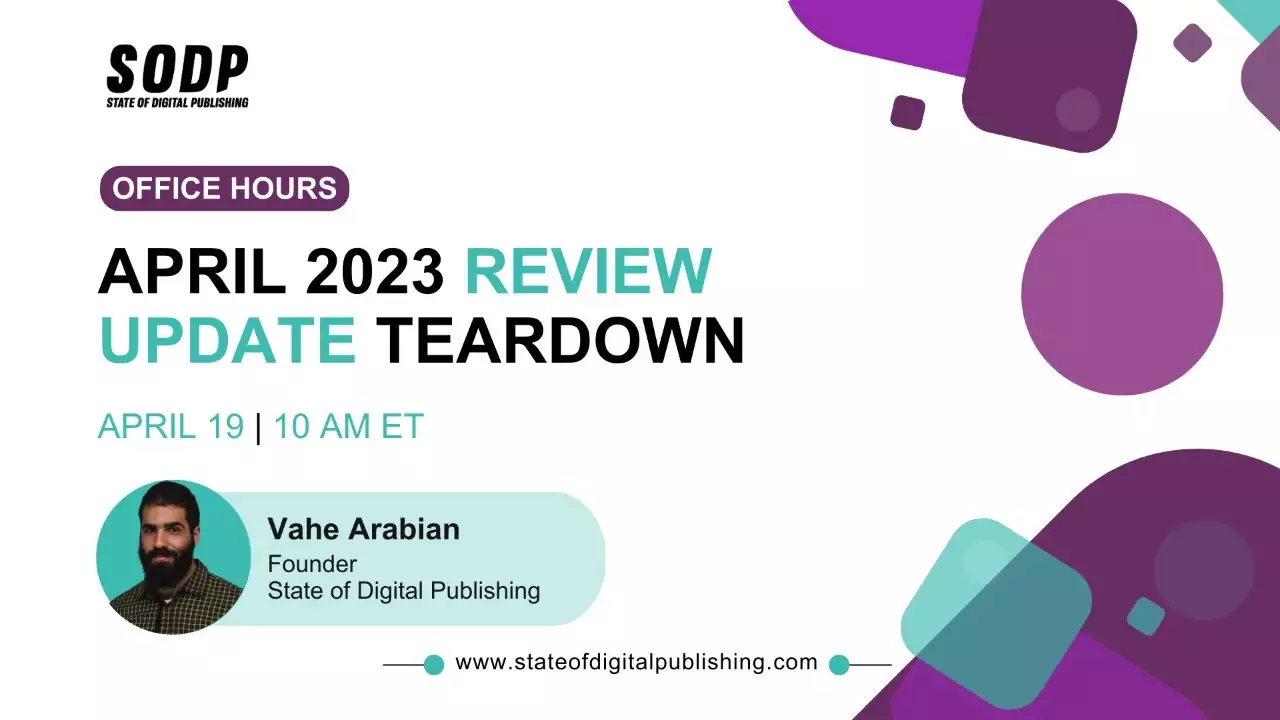Office Hours
Join Alexis Grant, founder and CEO of They Got Acquired, Claudio Cabrera, VP – newsroom strategy and audience of The Athletic, and Andrew Kemp, managing editor of State of Digital Publishing (SODP), as they discuss the basics of running editorial teams and workflows. Follow along as they interact with SODP members and share the fundamentals of effective editorial strategies and workflow management.
Agenda
Running Editorial Teams and Workflows: Discussion and Q & A
We are experiencing one of the greatest democratizations of content in history. Audiences can access all kinds of information and content, while publishers can connect with their audience as never before.
However, this shift means there’s lots of competition in the market. It also means media organizations, publishers and content creators need to operate efficiently in terms of understanding their audience, while building teams, processes and workflows to ensure a quicker and more effective supply of information.
Alexis Grant and Claudio Cabrera share their experience and provide us with important tips on crucial parts of the editorial process, from building a team to promoting content.
What are the first steps you take while building an editorial team from scratch? What would you suggest is the go-to strategy when you’re building from nothing?
Alexis Grant:
The first piece is figuring out what you need, such as what kind of content are you creating — written, audio or video — what’s the format and who you need to create it. Once you figure that out, you can then assemble a team of the right people to do it. A common mistake people make when assembling a team is that they know who they want to hire but fail to allocate enough time to put it clearly in the job description.
While working as a consultant for a few established editorial teams, I have noticed that even well-run teams don’t have a great practice of being clear on exactly what they need from the people they are looking to include in their team.
Claudio Cabrera:
While building a team, we can get trapped between hiring talent versus hiring exactly what you need. It should all come down to your organization’s needs. A proper job description and a proper idea of why you need each person in your team is the key factor.
Some organizations build up sections so aggressively that they only realize it wasn’t the area they should be giving attention to when it’s very late. Let’s suppose you hire 40 writers to write business articles for your publication and realize that business wasn’t the area your publication should have been focusing on. It can be difficult to assimilate business writers into a new field. At the same time, you should also look into creating an agile team.
You mentioned that identifying the organization’s need is important, and that building an agile team is equally important. So, how do you go about assessing and reviewing your resources to adapt as required?
Alexis:
When you’re building a business, one of your primary jobs is to design your team. You have to trim a lot as your team grows, so it functions the way you want. Figuring out what’s working and how you can redistribute the resources from the areas that are not working is important.
As a business owner, you may feel like you don’t know what you’re doing, and it’s okay. As long as you are identifying what’s working and what’s not, and readjusting to the situation according to your observation, you’re moving in the right direction.
Claudio:
I agree! Data is your best friend in a lot of these situations. Important insights that you get from data can help you make swift and informed decisions from an editorial and even business perspective.
Let’s take an example of a sports publication that has limited resources. In that case, you wouldn’t want to cover all 32 teams of the NFL. You may look at the data and identify what team is performing better, which region has the most followers of a particular trend, etc. and plan your strategy accordingly.
Data plays a crucial role in identifying what’s working and what’s not, and how and where you should focus your team’s attention.
The SEO space can be somewhat daunting for small and even large publishers. You suggested new publishers start small and narrow their focus. Which areas do you advise are the easiest for newcomers to make the most progress quickly?
Alexis:
I would look at already existing content for this because you can easily identify what’s working already. In my opinion, it’s comparatively harder for new publishers because you first have to figure out what you’re going to cover and keep testing it. With an existing business, however, you can figure out so many things with one SEO audit.
Claudio:
Adding to that, when a lot of people think of SEO, they think from a content perspective and only focus on ranking. However, I think technical SEO is more important. It allows you to understand where you are competing. It will help you use your resources properly and structure your website correctly.
Since there are so many moving parts in the publishing process, success may look different from the perspective of different organizations. What are the metrics a technical team should look at compared to an editorial team, and how do we communicate them correctly?
Alexis:
Some of these things become complicated as you grow. One thing that has always helped me solve the confusion during such situations is getting clear about your top KPI. For instance, our top KPI at They Got Acquired is email subscribers. Even though your SEO traffic is terrific, it’s not helpful if it doesn’t convert.
Most importantly, the leadership should get everyone on the same page. If everyone has different goals, it’s hard to achieve a common one.
Claudio:
Whether you’re a publication or a business owner, the most important thing is to evangelize your audience. And it should work not just from a search engine perspective, but also from the social, newsletter, and so many other approaches.
Most editorial teams focus more on page visits. However, it’s also crucial that they know the technical metrics behind it. For instance, the number of views doesn’t fully explain the performance of an article.
One million views might not be that impressive if you also figure out that people are spending only 30 seconds on that page. A daily report that covers every important metric can help keep everyone on the same page.
There is this concept of editorial reservations to SEO adoption. Where do you think the common ground between SEO and editorial lies? And what’s the quickest way to build an effective line of communication on the back of it?
Claudio:
I think understanding where you’re working is the most important thing. Editorial buy-in is different everywhere. Therefore, important SEO concepts should be communicated as editorially important elements.
Communicating the idea of a reader service without focusing much on traffic numbers is a better way to communicate with editorial people. As an SEO specialist, you communicate a highly searched topic with the newsroom in terms of the possible value it creates, not how much traffic it attracts. Also, how you handle rejections — and there will be a lot of those — will determine how you build a relationship with the editorial team.
Alexis:
I often examine different ways to reframe SEO in the newsroom. A lot of resistance comes from people with previous bad experiences. SEO should be communicated as a strategy built for people, not Google. Correctly communicating the benefits behind optimizing an article can help overcome editorial doubts.
Good reporters always look for ways to improve their skills. And the fact that it helps them to optimize their own work will certainly attract them to SEO. So, including the editorial team in a few SEO processes may play a good role in tackling editorial reservations.
What are the ways to embed SEO into the editorial workflow to make it a more standardized experience?
Claudio:
Well, you can certainly strengthen the editorial process by making SEO the first part of the process instead of the last. You can work on and identify keywords before moving to other aspects of content creation, such as headlines, URLs, intros, etc.
We actually have individuals responsible to ensure SEO strategies in each department. They are basically the editors who communicate with the SEO team before and after developing a piece of content.
Alexis:
You could optimize forever and never be done if you have a lot of resources. However, identifying the low-hanging fruit is crucial in terms of making the whole process smoother. Sometimes it makes sense to have SEO at the front, but it may not always be the case.
Having someone closely monitor the process can be beneficial. However, organizations with limited resources may not be able to do so. In that case, it comes down to identifying the pieces that may have the most impact.
Content from our partners
Resources will always be a major concern for organizations, regardless of their size. So, in your experience, what are common recurring resource bottlenecks and how do you address them?
Alexis:
The problem with most content creators is that we often come with a scarcity mindset because we are always used to not having enough resources.
However, at the end of the day, figuring out the best way of spending your money makes sense even if you have unlimited resources. In such situations, I try to be more clear about the areas that I’m good at and those that I’m not. It helps to have a clear idea of what tasks require outsourcing.
Claudio:
When I used to work for smaller companies, one of my biggest issues was that I always tried to do everything on my own. Though I thought that would help me grow, it was just an inefficient use of my time.
So, yes, identifying your strengths and weaknesses matters a lot in situations where you’re struggling to manage your resources. Delegating tasks properly, focusing on high-impact tasks, and prioritizing all the tasks accordingly help a lot.
What strategy do you think reactive news publishers should follow to build their brand and perform better against their competition?
Claudio:
If you’re producing similar content to what many other brands are doing, small brands will find it very hard to win the search engine competition. How you create content will be crucial in terms of building your brand. You should focus on building content that stands out from the rest of the competition, and you would want to publish that fast.
Alexis:
News content is not evergreen content. It can be very hard for such publishers to win the SEO game. The brands that are winning SEO are the ones that are creating evergreen content.
Therefore, SEO might not be the best strategy for news publishers in terms of building a brand. However, there are other ways like social media and emails that are more effective for such brands.
Watch past and future episodes on our YouTube channel and website with detailed notes. Follow us on LinkedIn, Twitter and Facebook.


